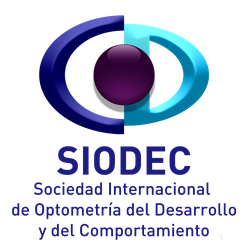
Rafael Cruz, a graphopsychologist, argues in this interview the importance of understanding children's writing as a deep reflection of neurological, emotional, and perceptual development. In his presentation at the IX Congress of SIODERV, he will address the different forms of dysgraphia, the influence of society on its emergence, and the potential for collaboration between optometrists and graphologists to intervene early, effectively, and empathetically.
What exactly are dysgraphias and why is it often forgotten that there are different types?
Dysgraphia is a learning disorder that causes difficulty in handwritten expression. It is characterized by writing skills that are clearly below the level expected for a person's age, intellectual capacity, and educational level; difficulty in producing legible writing due to a lack of primarily fine motor skills, but also frequently gross motor skills; motor problems resulting from poor visuomotor coordination that hinders the execution of fine movements; malformations and discrepancies of all kinds that generate a defective quality of the stroke, whether in letters, numbers, words, etc.
Different types are often forgotten for various reasons: the first is ignorance; a good number of professionals only think about the dominant dysgraphia – the motor dysgraphia, which I understand you call visuospatial or visual – and they are unaware of the existence, for example, of emotional dysgraphia and are unable to distinguish dyslexic dysgraphia from motor dysgraphia (among other things, because they frequently overlap); secondly, I believe it has to do with the fact that the differences are not perceived in depth, likely because thorough research has not yet been conducted on how the different dysgraphias impact the visual system.
I encourage you all to conduct that deep and productive research!
During your presentation, will you address the role of educators and parents in the development of graphomotor skills?
Yes, without a doubt. I will explain the results of a research study we have conducted on the graphomotor grip, which is partly responsible for dysgraphia, and the important role and responsibility that parents, teachers, and society in general have to reverse the horrible statistical figures we are facing. I can summarize it by saying we need more street, sports, and nature, and less digital dementia.
“More street, sports, and nature, and less digital dementia: that’s where the prevention of many dysgraphias begins”
What is Paidography, and how can it complement the role of the optician-optometrist?
Paidography is the tool that arises from the Psychology of Writing, focused on the study of the projective writing test in children and adolescents. It investigates, with a scientific and statistical approach, personality traits, behavior, and learning potentials, or, alternatively, learning difficulties, where they originate, and how to correct them.
Why is it important to know how to detect the earliest signs of dysgraphia in children and adolescents?
For various reasons that range from neuropsychomotor to emotional. A child-adolescent with dysgraphia is clearly expressing on paper developmental issues in different areas (motor, visual) that urgently need to be addressed for the proper development of their brain-body-visual system, and because it is evident that these kids are hooked on cortisol day after day, facing not only criticism from peers and educators, resulting in a severely impacted self-esteem and leading to a dislike of writing.
Since writing is so absolutely relevant during their school period, it is very important to identify the problems it presents and immediately address them so that it becomes a driving force rather than a burden in the learning processes.
What are you most passionate about in graphopsychology? What do you think is of special interest to optometrists?
There are many things about Graphopsychology that fascinate me: the first is the possibility, using our scientific-deductive methodology, to understand a person's personality almost in its entirety, without the need to be invasive, without asking questions; the second is the ability to offer the individual a broad perspective of themselves, from birth to the present day, to show them the reasons behind their decisions, psychosomatizations, and all the potential for improvement that they barely perceive or are unaware of; because it allows me to investigate the psycho-physical reality of the individual in very different fields; and because we are increasingly clear about the neuroscientific phenomena that generate the psycho-physical projection of the individual through their writing.
I understand that our mutual tools of work are actively related in the common denominator of human behavior and learning difficulties. You, from the perspective of vision, are able to understand how this affects behavior. We, from the perspective of writing, see the direct projections of behavior in the transformations of the calligraphic model, applying this methodology to analyze human behavior from Graphopsychology; behavior and learning problems of children and adolescents from Paidography; furthermore, we seek to delve into the active relationship between the perceptual system, the brain, and the body in its graphic projection, to find the reasons behind behavior from a neuroscientific perspective.
